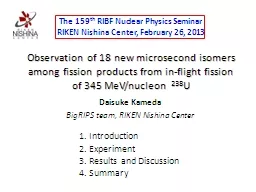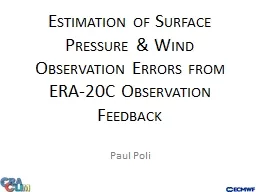PPT-Observation of 18 new
Author : phoebe-click | Published Date : 2016-05-17
microsecond isomers among fission products from inflight fission of 345 MeVnucleon 238 U Daisuke Kameda BigRIPS team RIKEN Nishina Center The 159 th RIBF Nuclear
Presentation Embed Code
Download Presentation
Download Presentation The PPT/PDF document "Observation of 18 new" is the property of its rightful owner. Permission is granted to download and print the materials on this website for personal, non-commercial use only, and to display it on your personal computer provided you do not modify the materials and that you retain all copyright notices contained in the materials. By downloading content from our website, you accept the terms of this agreement.
Observation of 18 new: Transcript
Download Rules Of Document
"Observation of 18 new"The content belongs to its owner. You may download and print it for personal use, without modification, and keep all copyright notices. By downloading, you agree to these terms.
Related Documents














